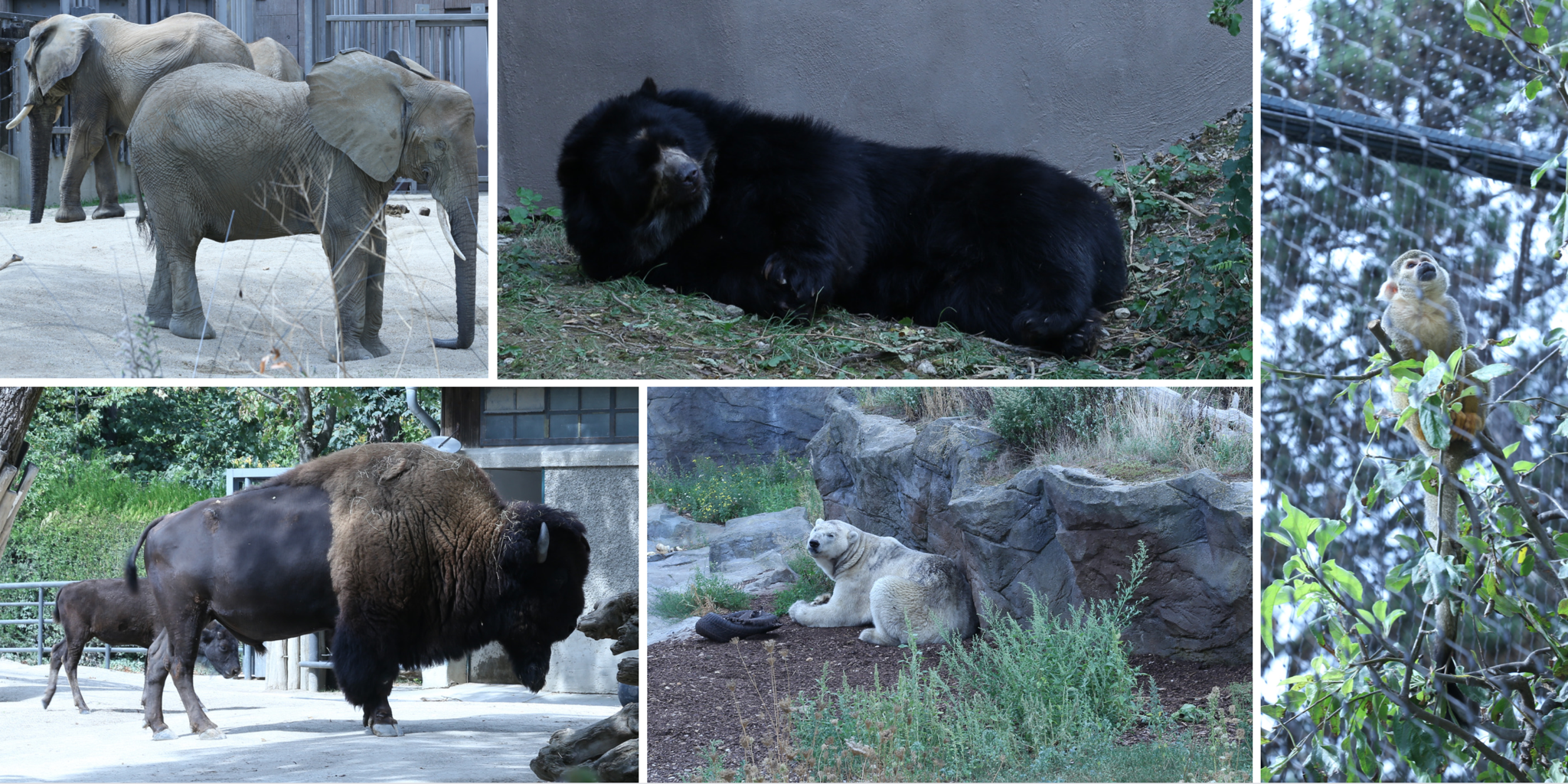
#2: going halvesies on a baby elephant with a Saudi Prince - and my experience at the Schönbrunn Tiergarten
02/09/2023 - Vienna
This story begins as do so many of those that very few people actually want to hear: A long, drawn out description of a dream someone else had. Feel free to clock out now, unless you're like me. I love hearing about dreams.
A billionaire, a Saudi Prince based in Vienna, whose very existence I cannot confirm nor deny, and who I almost certainly would not like to meet, called me up.
His contact was saved, in my dream phone, as “Saudi Prince”. (Here, I have to tip my hat at the stunning creativity demonstrated by my subconscious mind.)
“Pawlu, they’re going to put down the baby elephant," exclaimed the sentient oil money.
"We have to do something!”
Without hesitation, I leapt into action. I knew instantly that the “they” was the Schönbrunn Tiergarten - the “animal garden” on the grounds of the imperial Schönbrunn palace, also known as Vienna’s world-famous zoo.
The “something” we had to undertake, naturally, was a 50/50 split on the purchase of the doomed baby elephant.
I assume, if I can break briefly from my retelling of this dream, that my subconscious would have justified the zoo’s decision by explaining that there simply wasn’t enough space for them to accommodate this baby elephant once it had grown up.
They are - famously - rather large. Their ears alone… that’s some serious real estate. In this economy?
As to how my subconscious would have justified that my Saudi Prince homie was the first to find out, I cannot quite figure out. I suppose when it comes to the narratives constructed in dreams, one must grant their subconscious some degree of suspended disbelief.
The rest of the dream was a blur of financial dealings, strange negotiations and the emptying of an already meagre bank account. (For one of us, at least.)
As a fledgling thousandaire, I’m only ever one fairly large transaction - such as the purchase of what actually amounted to a very reasonably priced elephant - away from absolute financial collapse. That’s the sweet spot. That’s where I live.
There are three factors which should have given me pause, before I fully unleashed the intense and immediate worry I experienced that night.
First, without any prior knowledge of this zoo, I presume that the Schönbrunn Tiergarten isn’t in the business of euthanising baby elephants. Even when considering how infernally big those flapping ears are going to get.
Second, despite my thousandaire (at least at the time of this dream) status, I am not normally in the business of buying or owning baby elephants.
Don’t get me wrong, I would love to hang out with one. If you’re the baby elephant who sent me this dream via tele(phant)pathy, please do reach out - and maybe we can crack open a watermelon together.
With that in mind, and I’m so sorry that this needs to be said, I do not want to own you.
Third, I don’t think that billionaire Saudi Princes are in the business of going halvsies on elephants with poorsies such as myself. Seems like the sort of thing they’d be able to handle without my contribution.
My understanding of oil-rich billionaires - which I acknowledge is based on a stereotypical interpretation of the exploitative, extractive and destructive attitudes of those decadent few profiting most from the devastation of our currently comfortable atmosphere - is that they’d likelier shoot an elephant for sport than be deeply concerned about the prospect of said beastie being put down.
Maybe that’s unfair, but in this case especially, given that this Prince is hypothetical, I’m prepared to let myself off the hook.
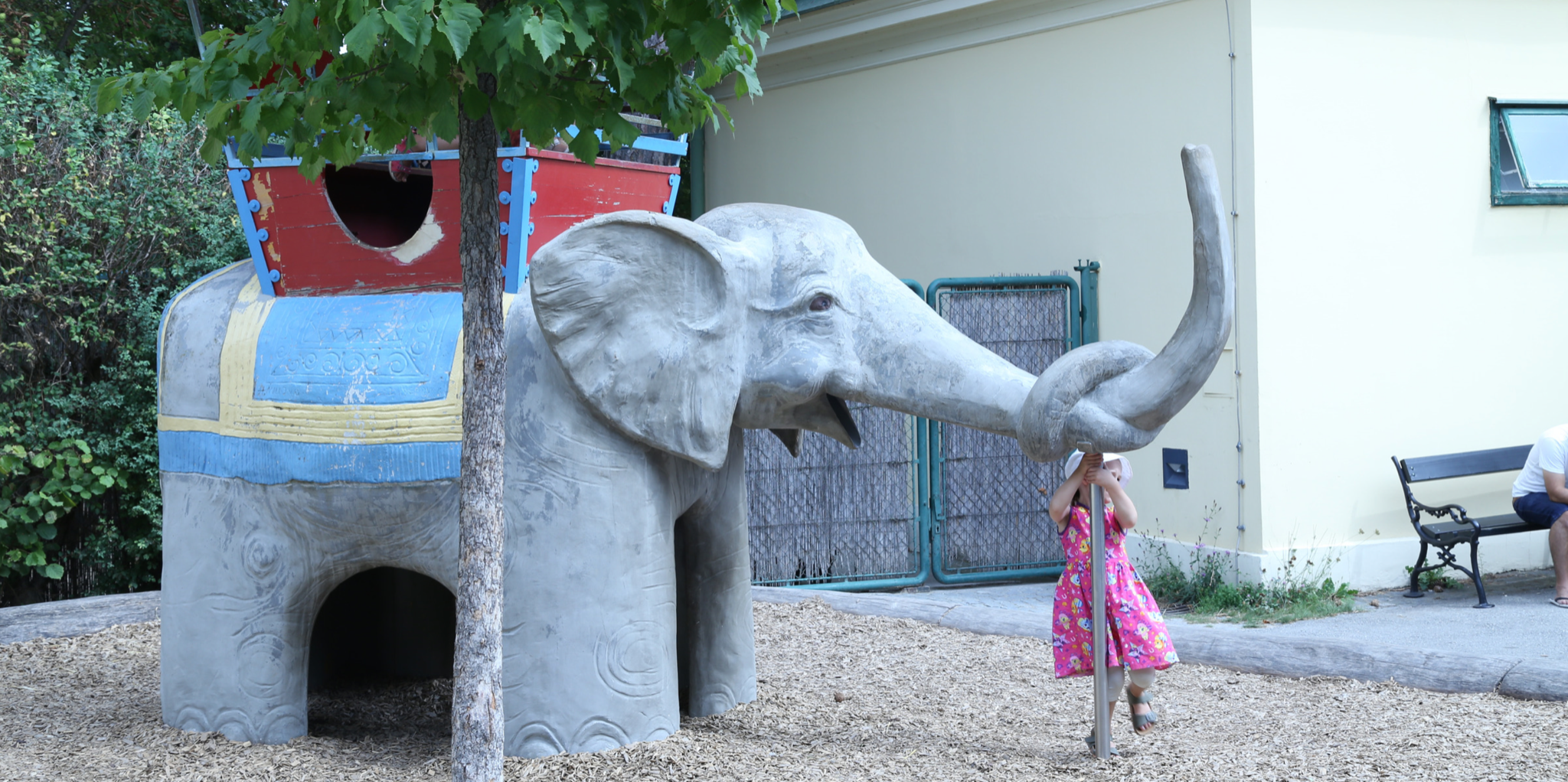
This was one of many vivid anxiety dreams I had last week. They were caused by some combination of sheer excitement, derived in my being in a new city, having accepted a new job, having two pending flat applications for myself and my wonderful partner, and also, having recently gone cold turkey on THC.
Individually, and collectively, helluva drug(s).
The dream-choice I made, to save the baby elephant’s life (making me something of a Dumbo, if you will) meant that I would no longer be able to afford the deposit for a flat.
I suppose the plan was that when winter approached, and I found myself sleeping out in the cold, the fact I’d saved 50% of a beastie’s life would hopefully warm my heart enough to keep the blood pumping into my frostbitten fingers for just a little bit longer.
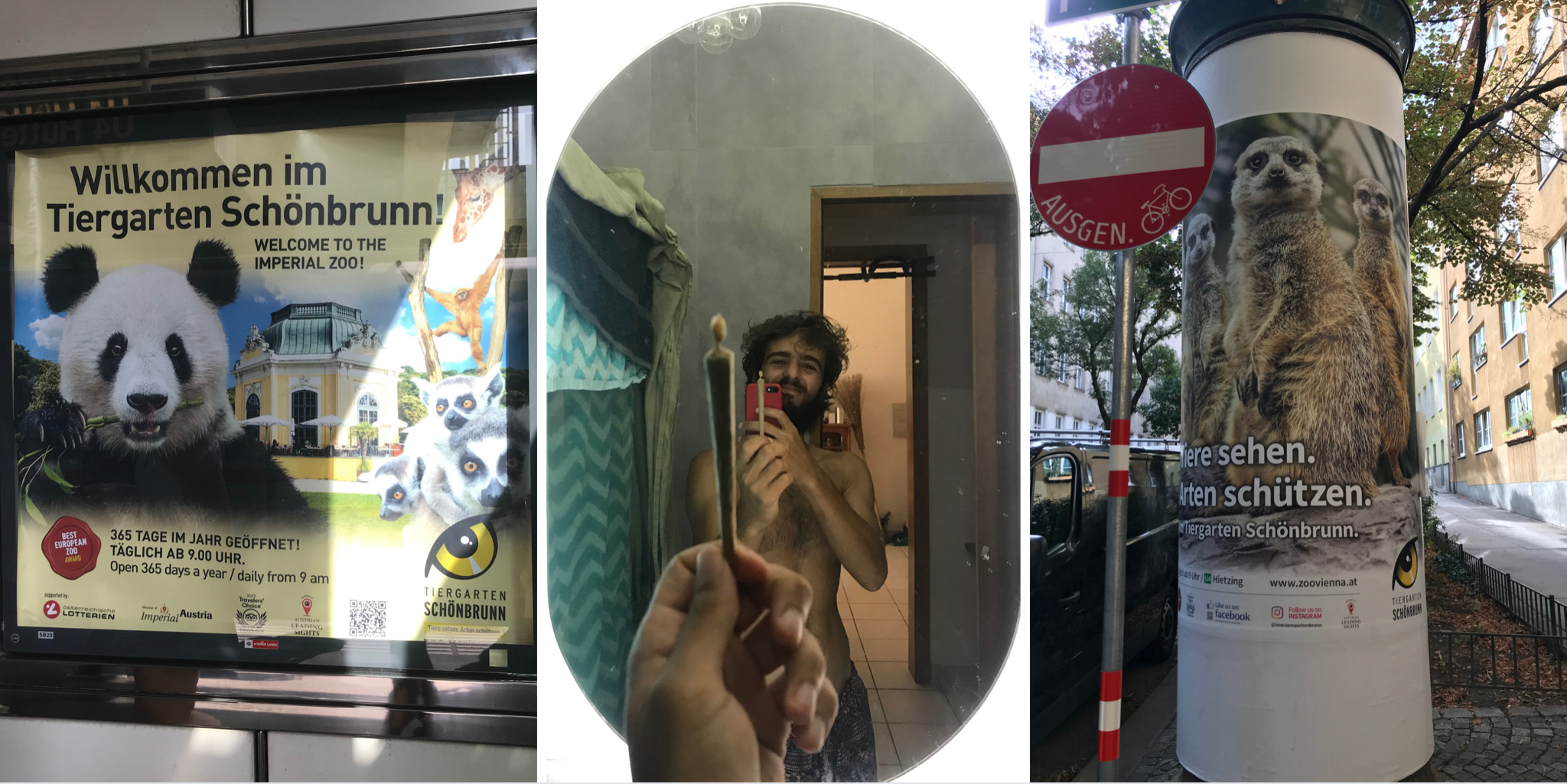
The dream woke me up, and I couldn’t get back to sleep. While most dreams fade from my conscious memory before I even have time to recount their narrative, I wrote this one down, and it stuck.
So I started to think about zoos.
I hadn’t been to a zoo for over a decade. The most memorable and lasting image I had from a zoo was actually the experience of a single animal over two visits, which took place several years apart.
Growing up in Luxembourg, one of the nearest zoos was Amnéville, in Hagondange, France.
The unshakeable image is this: the zoo’s polar bear, a magnificent, powerful beastie, kept in a tiny enclosure, complete with a two to three metre deep pool, swimming furiously with their head above the surface.
I watched this bear push themselves from one side of the pool to the other. When they reached the other side, the bear would pivot their hulking mass swiftly - in an incredibly practiced move - like an olympic swimmer (but furrier, and more endangered), before pushing themselves off to the other side.
Again and again, this polar bear pushed themselves through the water across a six metre gap, b(e)arely longer than the length of their outstretched body.
I remember one of my parents remarking that the bear looked as though it had lost their mind. Maybe the monotony of zoo life, of spending their entire existence in a confined space, with a body which evolved to travel great distances in search of food, every day, had gotten them stuck in this perpetual loop.
To be honest, even as a person who loves swimming with my whole heart, I often regard people with the drive to swim lengths over and over again with a mixture of admiration and concern for their mental well being.
Bears aint meant to swim lengths. That same behaviour was replicated years later, when I visited again.
In the wild, the polar bear is a creature capable of traversing hundreds of kilometres of sea ice in a single day. Now, of course, because human beings truly suck, many of them are being forced to swim those distances instead - as our continued climate tirade melts the home beneath their padded paws.
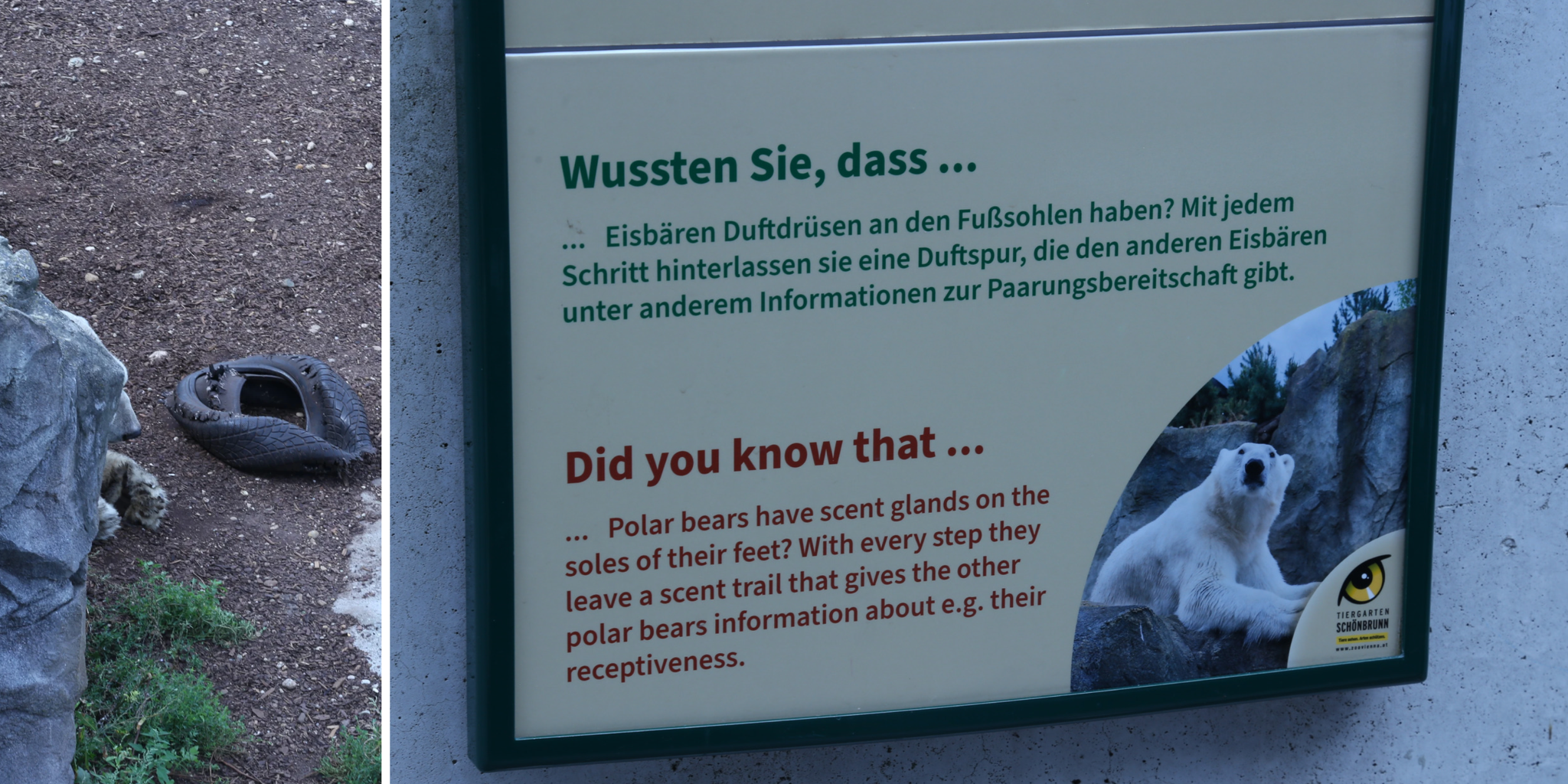
Since I last saw that bear, I had no interest in going to a zoo.
Throughout the intermittent years, in fact, I’ve learned more from those who oppose the existence of zoos, and about the destruction perpetrated by these institutions - along with the ways in which many of them have historically operated.
Regardless of the good some zoos may do - and Schönnbrunn Tiergarten does have legitimate claims for having invested in conservational work - they are bad places for non-human animal life. A case can certainly be made for them being bad places for humans, too.
I say this because of the experience I had at Schönnbrunn Tiergarten. My consciously self-reassuring reasoning was, on that dreamy, near-sleepless night, that as a “journalist”, it would be irresponsible of me not to follow up a lead. In a manner of speaking, a source (my subconscious) had just tipped me off that Vienna’s zoo was killing a baby elephant.
I had to investigate.
Of course, I knew that I was rationalising, and that really, I just wanted to go marvel at the beasties, and write about the zoo in a blog post. (Insert self-flagellation about being just as exploitative and hypocritical as those I’m critiquing.)
How could I not want those things? I’m obsessed with non-human animals, and I’m very much capable of childlike awe (one of my favourite flavours of awe). If I could suspend my indignation, just for a few hours, and simply let myself enjoy the sights, it might have been a great day out.
None of that was to be. I guess it just isn’t that simple. What seemed like a fun idea at 4am, justified through flimsy reasoning, actually turned out to be an extremely conflicting and pretty unpleasant experience for me. That said, in much the same way as visiting a prison can be unpleasant, I had it easy.
My stay ended, I got to leave.
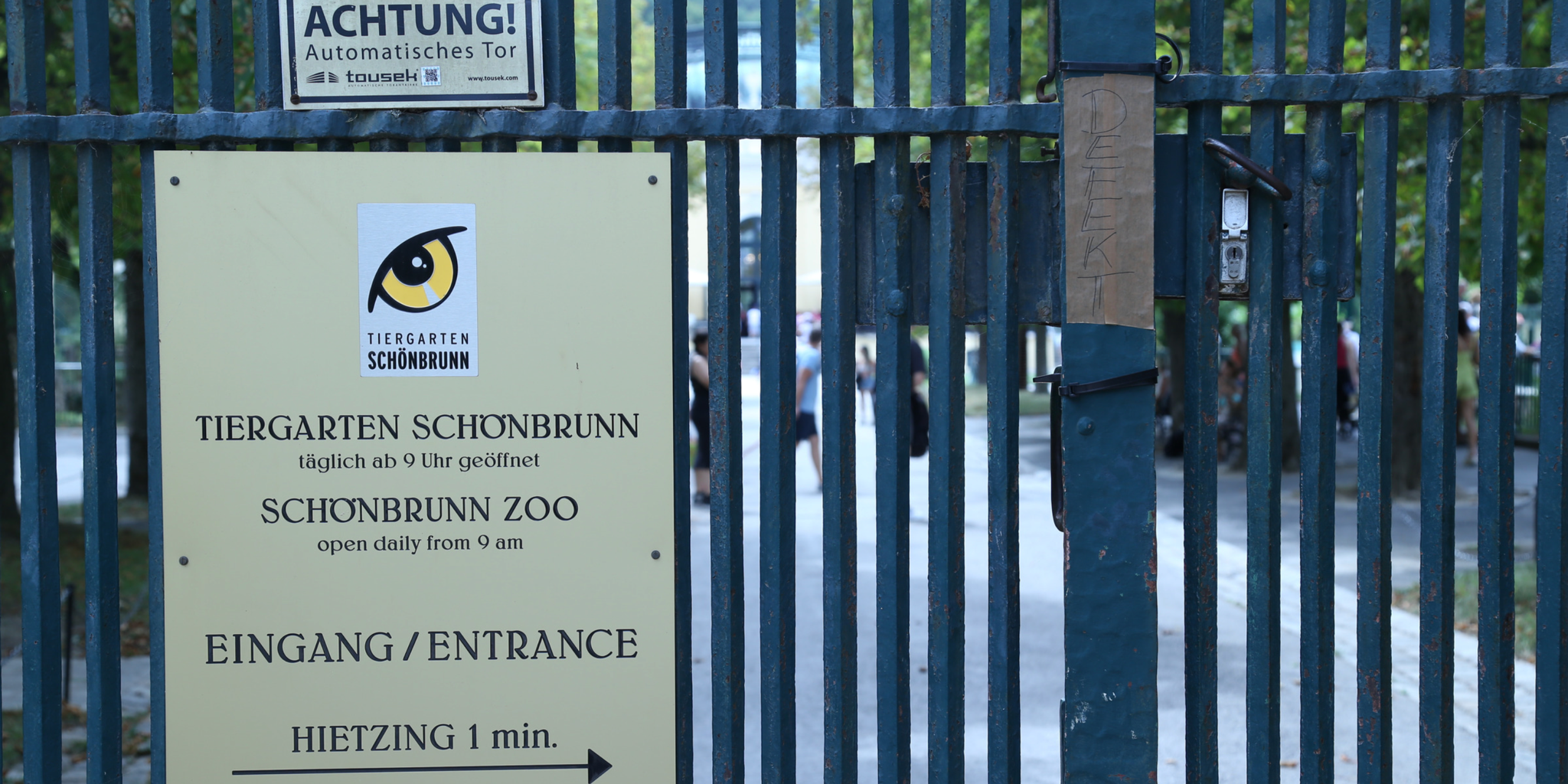
Having navigated my way through the grand grounds of Schönbrunn towards the Tiergarten entrance, I pushed through the turnstiles and thought:
“I shouldn’t have come.”
I felt the air change. I could sense that I was going to be looking at sights I should have been thrilled to behold - but not a single one was going to feel right.
At that point, I’d already paid the (hefty) price of admission. I’d already (though I hate this concept) cast a vote with my wallet - which is the central hypocrisy to this tale.
I thought that I might as well check out what has consistently been described over recent years as one of the best zoos in the world.
If this one is the best - or close to it - my suspicions feel, to me, to have been very much borne out by reality. The best zoo, because it is a zoo, is not a good zoo.
Schönbrunn zoo is the oldest working zoo in the world. In 1752, Franz I established a private menagerie on the palatial grounds. Prior to this, in the late 16th century, Maximilian II bought the property for the Habsburgs, and converted the buildings there into a hunting lodge.
In 1770, the Schönbrunn menagerie acquired its first elephant, kickstarting Schönbrunn’s elephantine history. Over a century later, in 1906, the first elephant ever to be conceived in a zoo was born at the Tiergarten. Much later, in 2013, the first elephant calf to be conceived through artificial insemination was born there.
Those interested in learning more about the 17 elephants which have died at Schönbrunn throughout the zoo’s history can browse the full list here.
In the latter half of the 1770s, the menagerie was opened to the public. Presumably though, the public to whom it catered was limited in accessibility to the wealthiest social classes.
The zoo has operated continuously, incarcerating hundreds of individuals, since then. During the First World War, the population was decimated by supply shortages and associated hygiene issues, and despite the donations from Viennese citizens, only around 400 animals survived.
At the end of the Second World War, an elephant born in the wild was euthanised after being brought to the zoo, where it suffered serious wounds as a result of aerial bombing. It was one of many animals to suffer such a fate as a result of collateral damage, after being taken from the wild only to be victimised by the violence human beings perpetrate upon one another.
Still, the zoo continued to function, and was rebuilt into the proud institution operating today. According to the Schönbrunn Tiergarten, “more than 700 animal species, some of them threatened, have found a home and a chance for survival as a species.”
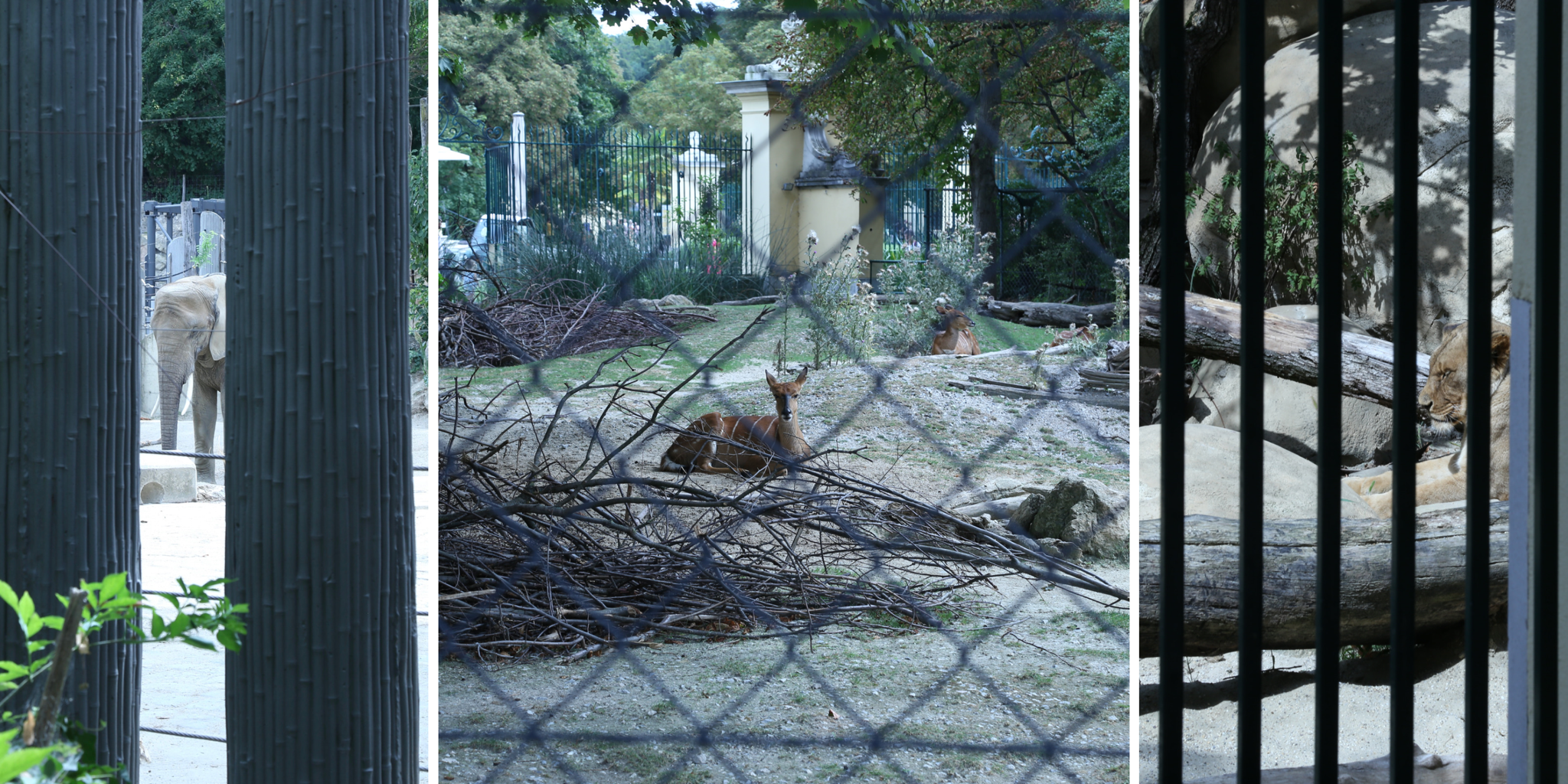
I walked around the zoo, making a beeline for the big beasties first and foremost.
My path brought me to the giraffe enclosure, first, and though it was full of huge, majestic animals, craning their long necks to eat leaves out of nearby trees, all I could really focus on was the fencing around them, and the gawping faces - like my own - marvelling at these animals.
Their enclosure consists of 440 square meters of indoor space, along with 1,770 square meters of outdoor space - with a small watering hole and several feeding points.
2,210 square meters of space is the totality of their existence. They have a lifespan of between 20 and 27 years in captivity.
That same enclosure, the one in which these roaming giants spend their entire lives snoozing (and being gawked at) is powered by a photovoltaic system, and heated in winter by underground gravel storage, which absorbs heat throughout the day before releasing it at night.
I bring this up because of how ironic it seems, to me, that this “sustainable” method of caring for incarcerated animals was considered so forward thinking and intuitive, in 2016, that the giraffe park was awarded the City of Vienna's environmental prize.
As I left the giraffe park, I encountered an example of why I think it is foolish that zoos are considered to be great educational resources.
Nothing that you learn about animals in a zoo, except that their very presence implies that they exist to be subjugated, commodified, and stripped of everything that makes them proud, independent beings surviving without the aid of human beings, actually necessitates their presence.
Next to their enclosure, a bald ibis was out patrolling the zoo along with thousands of human visitors. Perhaps the bird was doing so in an attempt to escape, or maybe it was supposed to be out there.
In either case, its plans were foiled when it encountered a fearsome group of people: a family with young children. I’m sure they were just trying to have a harmless, good time, but doing so in a pretty ignorant fashion.
The bird was stood in a corner paralysed, with no way of walking away, because they were walled in by parents and their children trying to take photos. Some were standing less than a metre away.
The ibis, with its stunning, long receded hairline, did not demonstrate any sort of aggression towards them. It simply turned to face the walls, standing still, but frilling its feathers in what, I presume at least, was a warning.
If it was a warning, this was lost on the parents, who thrust their children gently towards a bird which was their equal in height, and likely had much more power at its disposal than did they.
Thankfully, it did not choose violence, and did not seek to prove its doubtlessly superior rank in the pecking order.
Interactions between zoo visitors and detainees don’t always go so well. When improperly managed, these institutions can allow human beings to put themselves in dangerous situations.
RIP Harambe.
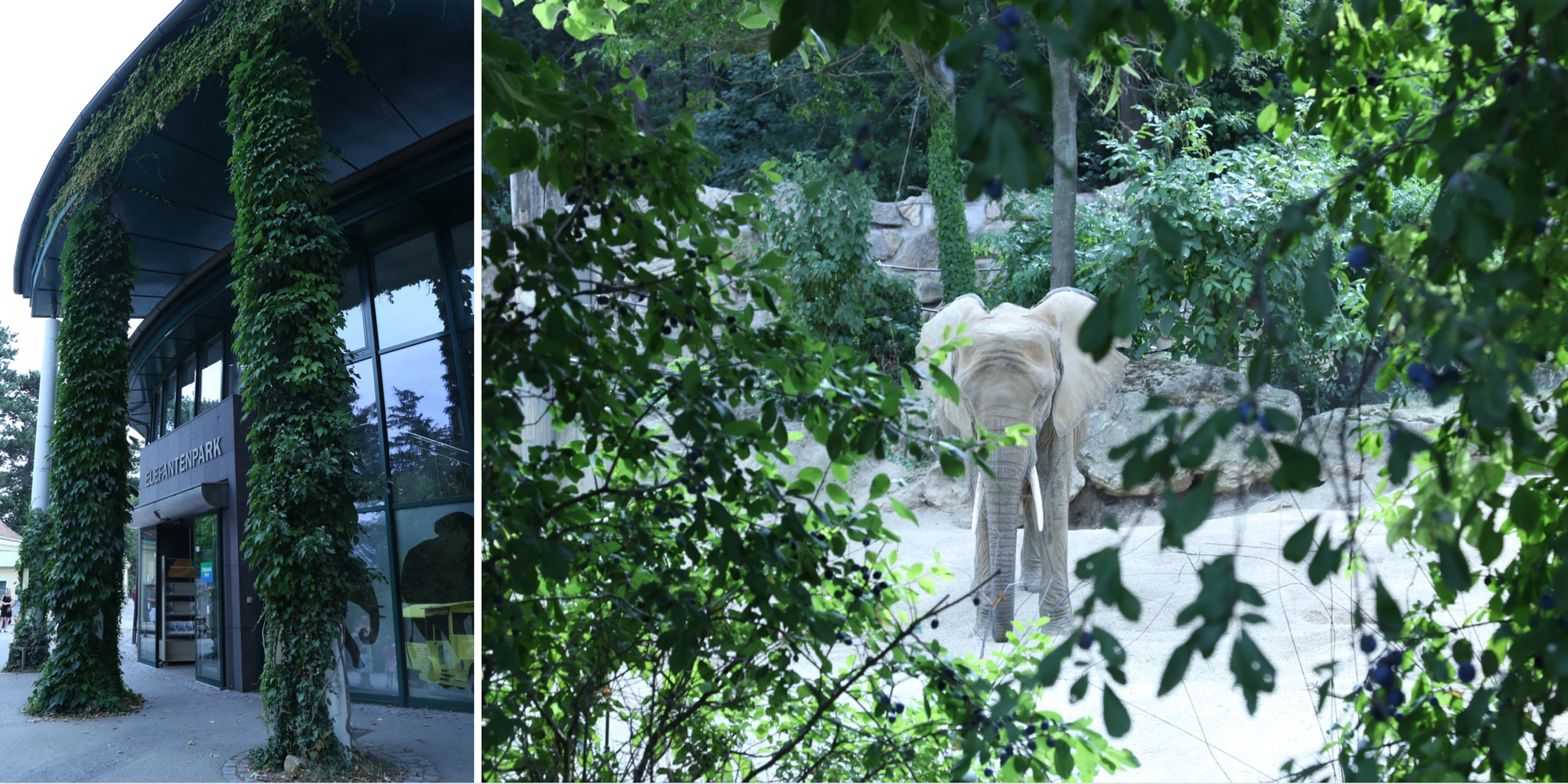
I ferried myself on past and proceeded to the main event, the elephant enclosure.
Significantly larger than the giraffe enclosure, at 6,700 square metres, this one surely promised to offer a less deflating sight than I had yet seen: bored beasties.
It didn’t.
It doesn’t matter that the elephant enclosure is much bigger than the giraffe enclosure. It is an enclosure. When you stand at one fence, you can see all of the others.
That is no way for any individual to spend a lifetime.
If, while reading this, you think that I’m anthropomorphising, and that I’m assuming that these animals have a level of awareness that is closer to that of a human than it is to that of an elephant, then maybe you’re right.
I do have a penchant for trying to empathise with animals, which might lead me to some false understandings.
On the other hand, though, I think that these animals have some sort of understanding of their predicament, as incarcerated animals, even if that understanding is embodied and not conscious.
Bodies which have evolved to roam across massive distances, for millions of years, do not forget what they developed to do
Even more importantly, I’m not quite sure what makes us think we have the right to imprison and exhibit living creatures in such a way at all. Is it that we’re just so much smarter, so much more capable of working together to protect the ourselves, our homes, and our earth,than any of these animals?
Is it because zoos are so essential in the pursuit of indoctrinating children into a worldview which ranks all non-human animal life as inferior to us, as separate from us, and as something which can and should be manipulated for the extraction of profit?
No. That’s very cynical of me. Zoos are havens built to protect species and educate young people about them, so that they can grow up and become conservationists who care for the planet and its species.
There are definitely no commercial interests at play.
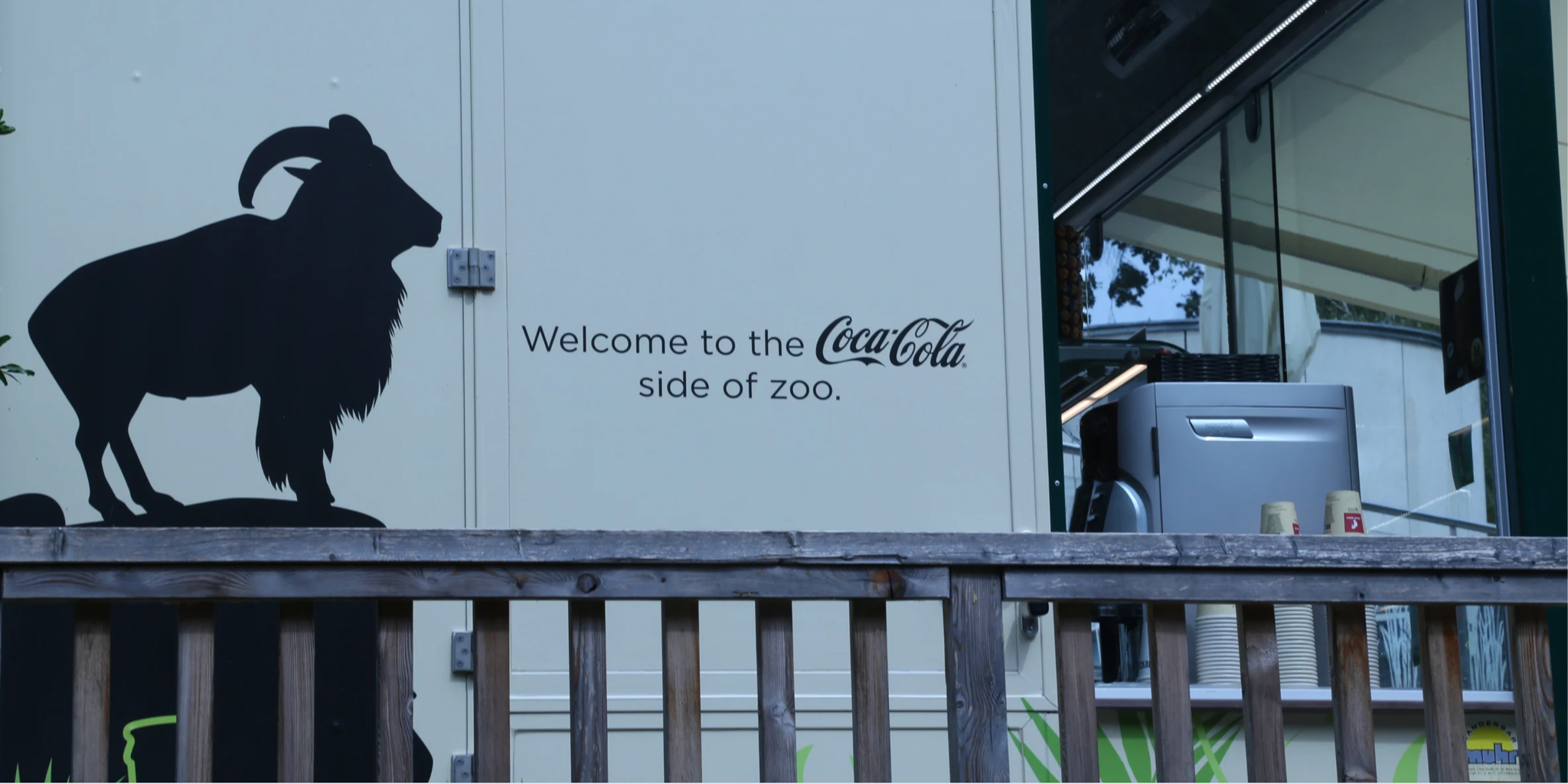
I kept walking through the zoo and saw a polar bear (looked bored), a spectacled bear (asleep and hiding) and a mighty bison (I’m admittedly not great at reading their facial expressions, but he certainly appeared to be hunched over. What a slouch).
Throughout the rest of my visit I saw lions, giant pandas, prairie dogs, water buffalo, reindeer, Barbary sheep, a rhino, iguanas, sea lions, orangutangs, bearded vultures, and even caught a fleeting glimpse of a Siberian tiger.
Maybe I’m ungrateful, and maybe the problem is with me, not with zoos.
I tried to remind myself that the ability to see so many amazing creatures from disparate habitats across the world, in any single place, within metres of one another, is incredible.
Yet I never managed to shake the feeling that human imprisonment of these animals, in their constructed “wildernesses”, had rendered the animals artificial too.
Nothing that they did or could do was spontaneous, either a result of their will, or of their evolutionary coding.
Everything that they did was done for the benefit of humans.
And that simply isn’t why they exist. It felt hollow, and quite honestly, heartbreaking.
(More like Teargarten, am I right fellas?)

Free the homie EVERY ANIMAL IN EVERY ZOO.
Here’s a prediction which makes me want to hurl:
As conditions in the wild world worsen, the existence of zoos is going to be deemed more essential. From the perspective of ensuring that many hundreds of species continue to exist at all, somewhere, avoiding their extinction may mean having them exist only in captivity.
Our stunted view of non-human animals as beings to be manipulated to our will is going to lead us to conclude that in order to protect those animals from our actions, we have no choice but to incarcerate and preserve them.
We kill their homes and we kill them, so we must save them from the people who is killing their homes and killing them, who, incidentally, is us.
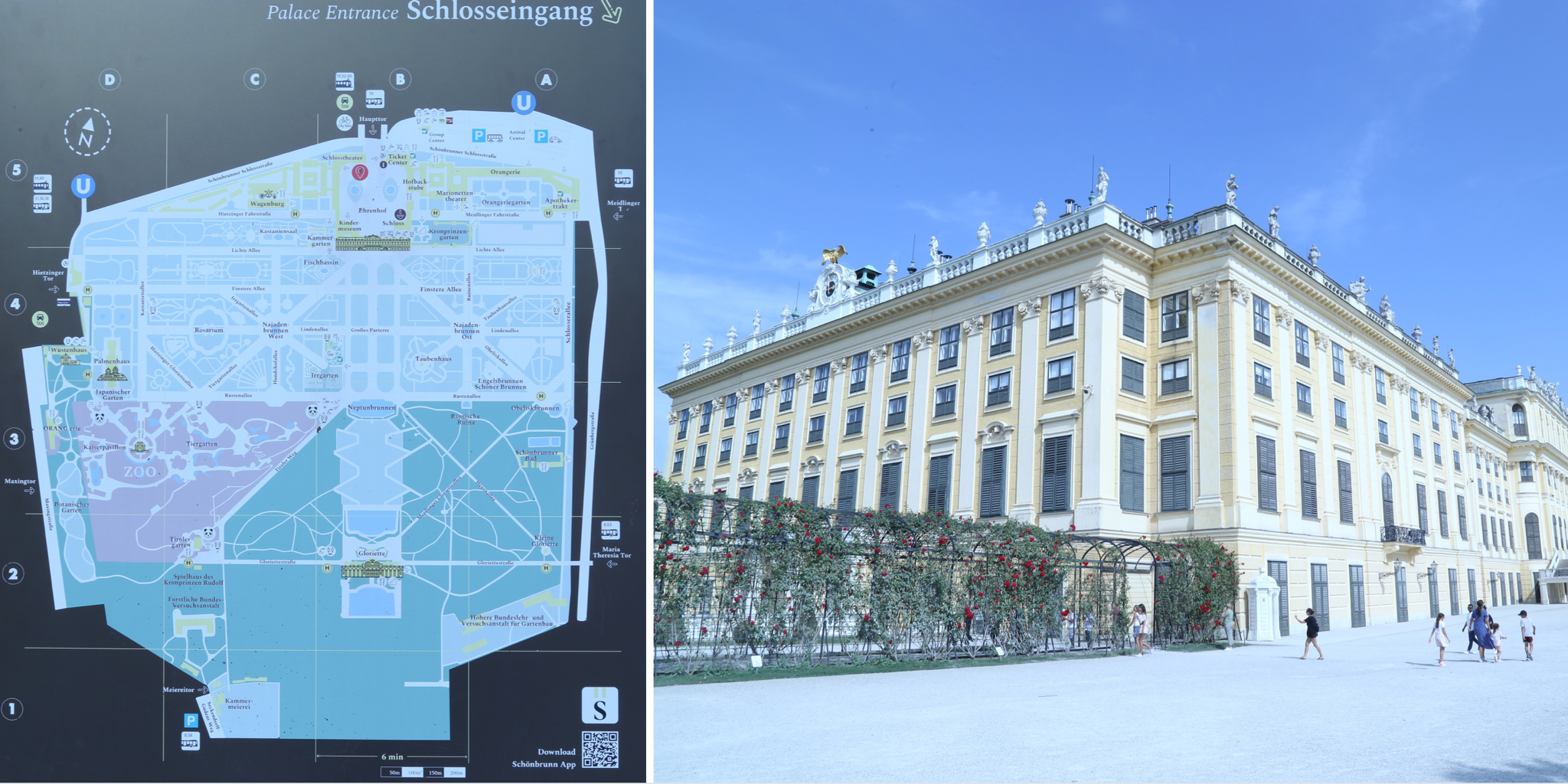
For a start, I think that the entire Schönbrunn grounds should be closed off from the public, and the Tiergarten should be expanded so that the animals within have some serious space to play with. This still won’t be nearly enough to give them the space they need to roam, but it would be a start.
This could be quite the double whammy victory.
At once, it would prevent tourists from marvelling at Austria’s imperial past, because monarchy is nothing at all to be celebrated.
This isn’t about denying history, its about acknowledging how fucked that history was, and how we should literally return the spaces stolen by a self-entitled and violent few to those who could actually use them most urgently and effectively.
Immediately, zoos should stop extracting monetary value from the lives of these animals. I also think that the same should apply to farm animals, but that’s a topic for another day.
Those which can be returned to the wild should already be there. And those which truly cannot could live out the rest of their days in Schönbrunn’s palatial grounds - given the retirement they deserve.
Away from my prying eyes.
blog the second signing off
1 Comment Add a Comment?
Andrew
I still think I deserve the status of a stalker at this point, but I genuinely love reading your posts. You have a brilliant style and you should never stop writing or I'll come find you in Austria and put you in the enclosure with the bison.